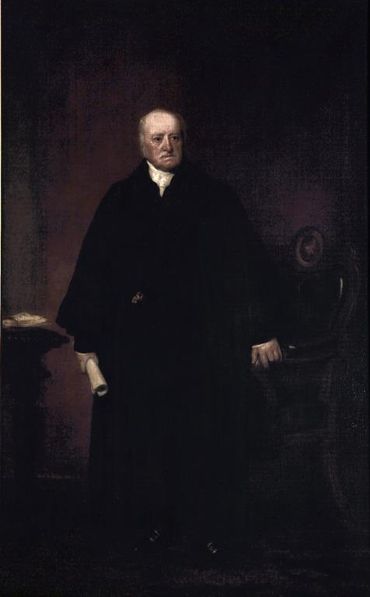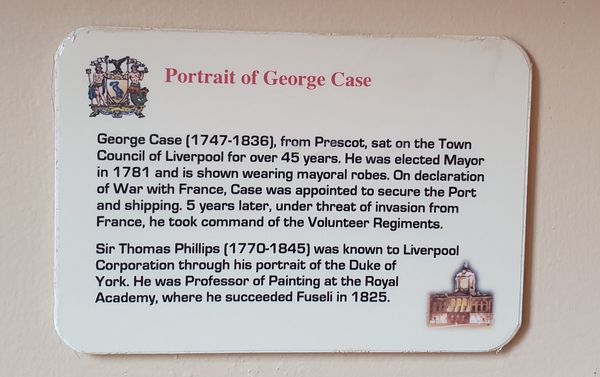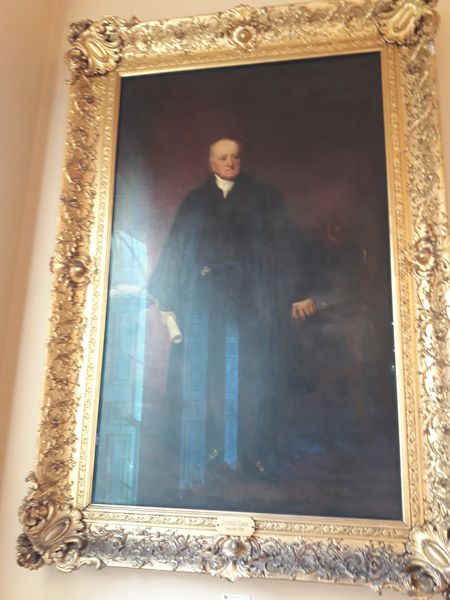George Case

George Case, Mayor, 1781
In the East Reception Room of Liverpool Town Hall hangs the portrait of George Case (1747-1836). The plaque currently in place (pictured below) refers to him as “from Prescot sat on the Town Council of Liverpool for over 45 years He was elected Mayor in 1781 and is shown wearing mayoral robes. On declaration of war with France, Case was appointed to secure the port and shipping. 5 years later under threat of invasion from France he took command of the Volunteer Regiments.
Sir Thomas Phillips (1770-1845) was known to Liverpool Corporation through his portrait of the Duke of York. He was professor of painting at the Royal Academy, where he succeeded Fuseli in 1825.”
I think something more appropriate would read like this:
“George Case was the son of a mercer from Prescot. As a young man he began investing in the trading of enslaved Africans and by the time of abolition he had become very wealthy as one of Liverpool’s most prolific slave traders, investing in more than 100 voyages by 1807. Case was a member of the Gregson syndicate in many voyages, but he is not listed as one of the owners of the infamous slave ship ‘Zong’, that resulted in the death of 131 of the enslaved after they were thrown overboard alive on the command of the captain to allow the owners to claim on the ship’s insurance. In 1788, Case was one of the signatories of the first anti-abolition petition to be sent to parliament from Liverpool objecting to the ending of the slave trade. He was a founder proprietor and served as the first president of the Athenaeum, Liverpool’s oldest surviving private members club. Case served as Mayor of Liverpool in 1781 and in the portrait he can be seen wearing his robes of office. Many of Liverpool’s slave traders would serve as Mayor of the town.”

